Week 11 as an intern at the Museum of Applied Arts and Sciences. No sign of life in the objects. Starting to think that basing my expectations on ‘Night at the Museum’ was unrealistic. Although, I have only been here during the day, so I won’t write that off just yet.
My name is Kimberley and I’m in my fifth and final year of a Communications and International Studies degree at the University of Technology, Sydney. What am I doing in a museum?
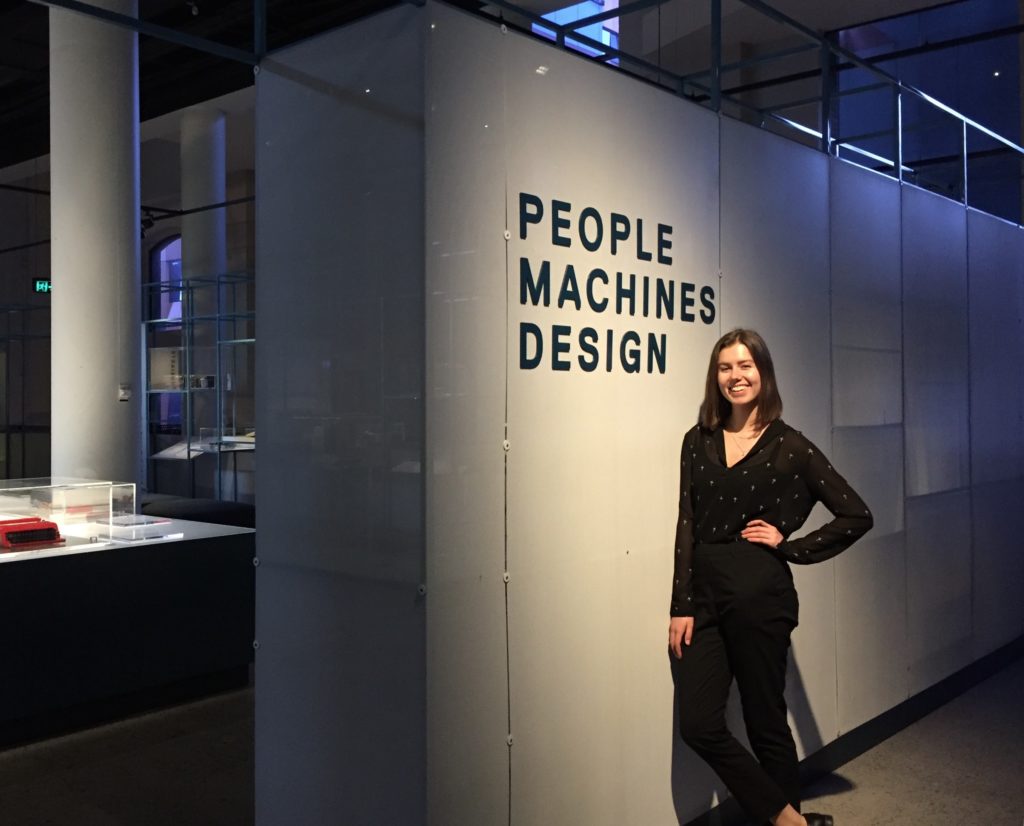
For the past three months I’ve been working across the Digital and Curatorial teams to assist with the MAAS website and blog. I never expected to have this experience as an Advertising and French major, but it has been a refreshing addition to my studies. My work has given me a closer look into the Museum’s collection; looking through posts on the Museum’s Inside the Collection blog and current exhibitions has challenged me to reconsider my ideas about what belongs in a museum.
On multiple occasions I have seen an object that I recognised from my daily life and thought: ‘what’s this doing here?’. By speaking with some of the Museum’s curators, I’ve gradually learned to recognise the value in keeping seemingly ordinary objects – by collecting these objects now, we create a record of the past for future generations. I also learned that there are many factors that make an object worthy of collecting, which can range from an object’s design aesthetics to the people and stories associated with it.
The MAAS collection is 500,000 objects strong and incredibly diverse. Here are a few objects that kick-started my new understanding of the important role of ‘everyday objects’ in the Museum’s collection.
The Eveready Torch
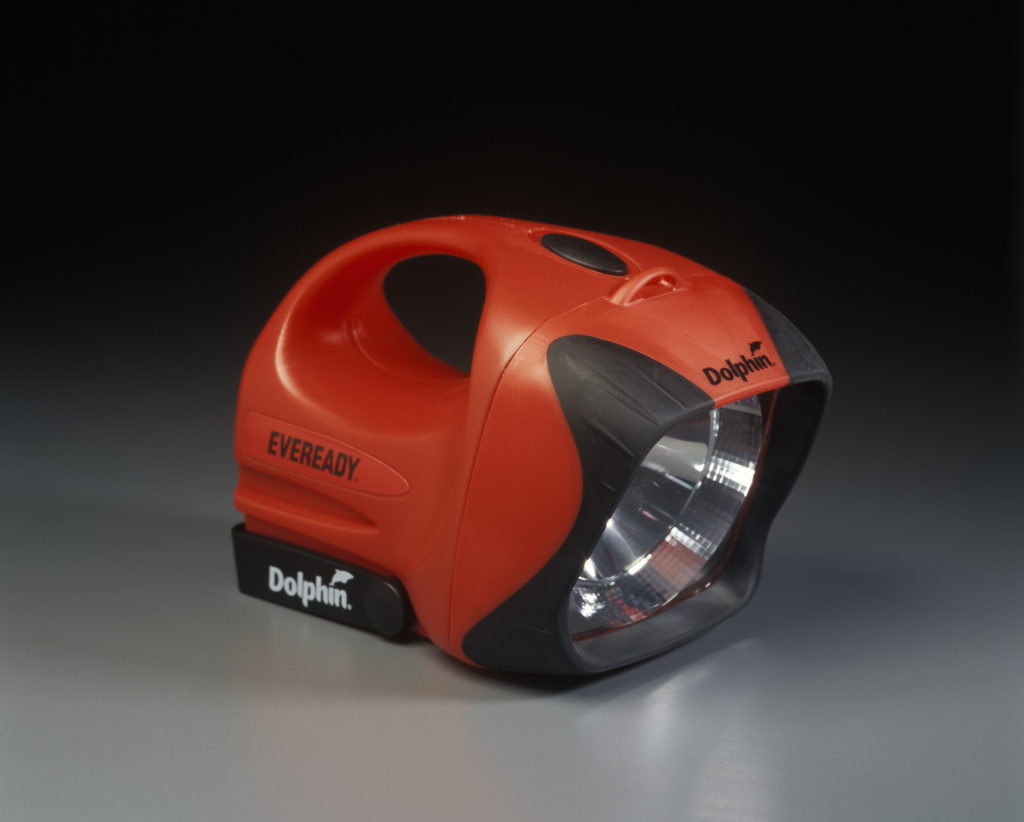
A torch just like this was used by my 6-year-old self to navigate the terrors of a camping ground at night; to find the best stick for roasting marshmallows; to shine into canopies of gum trees, marvelling at how far the light could reach. I never expected to see this in a museum.
The Eveready Dolphin Mk5 torch is part of the collection thanks to its achievements in design and functionality. It received a Powerhouse Museum Selection Award and an Australian Design Mark in the 2003 Australian Design Awards. It’s one of about twenty objects currently on display in the Design Nation exhibition at the Powerhouse.
Design Nation was co-curated by MAAS curator Damian McDonald and comedian Tim Ross. Melbourne-born Ross has been a fan of the Powerhouse since his first visit to Sydney and the Powerhouse in his 20s. It was the first time he had ever seen objects from his own life in a Museum, and it changed his perception of who Museums were for and what belongs in a Museum. Design Nation celebrates the ‘golden age’ of Australian design and manufacture in the 1980s, and in keeping with Ross’s earlier experiences, it features a host of objects which were ubiquitous in 1980s Australia.
After considering the bigger picture, it’s easier to see what this particular object is doing in a museum: it invites us to reflect on the past and consider how society and technology have changed over time. It’s up to today’s museums to preserve the now, for the future, and having the Dolphin torch on display and in the collection at MAAS enables current and future generations to understand the evolution of Australian products and design, and changes in global manufacturing trends.
The Braun Calculator
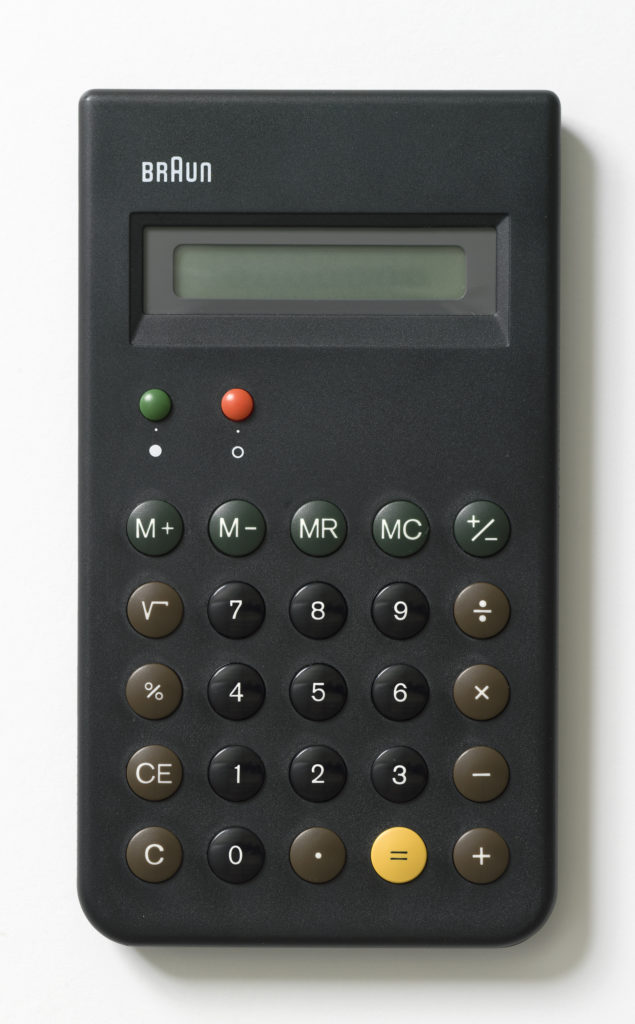
The Braun ET66 calculator is another seemingly odd addition to the Museum’s collection. Although this model was designed in 1987, I have clear memories of using a similar calculator in school, often trying to make words out of upside-down numbers instead of paying attention. There are multiple calculators on display and in storage at MAAS, spanning everything from old mechanical and analogue calculators to modern electronic and programmable ones.
This particular object is on display in the Interface: people, machines, design exhibition, but the first calculator I recognised in the Museum was in the Experimentations exhibition during a tour led by one of its curators, Sarah Reeves. It threw me off because I couldn’t understand how this simple piece of stationery belonged in a museum setting. However, in the same display sits a 19th century mechanical calculator designed and made by Lawrence Hargrave, and a custom-assembled calculator from the 1970s (both pictured below).
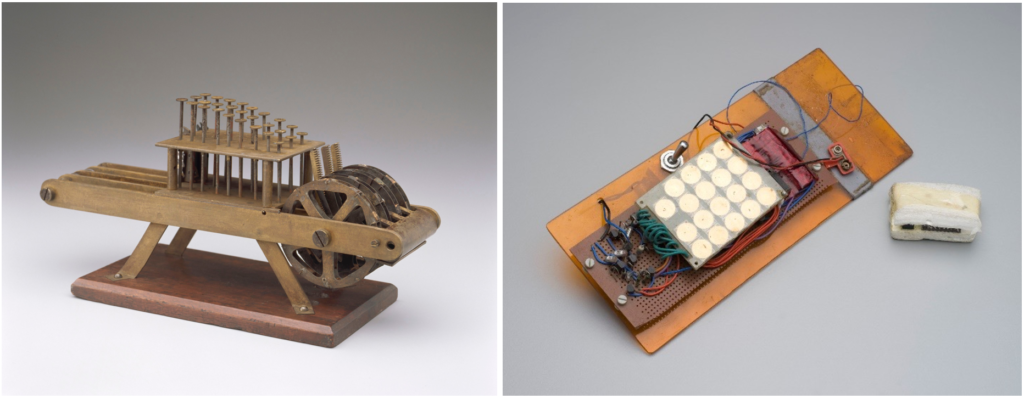
Viewing a modern calculator in the context of this display made it clear why MAAS would want to keep calculators in the collection. When considered together, these three very different calculators demonstrate the progression of technology and illustrate how ideas go from concept to prototype to final product. These inventions grow and evolve until we end up with what seems like an everyday object but is really the product of many decades – or even centuries – of continuous trial and error.
Another example of this can be seen at the Museums Discovery Centre, which I visited during my internship, where a variety of domestic technology such as televisions, lawnmowers and fridges are displayed together to represent decades of changes in design and technology. Seen in this context, it becomes clear why a Museum would acquire these objects.
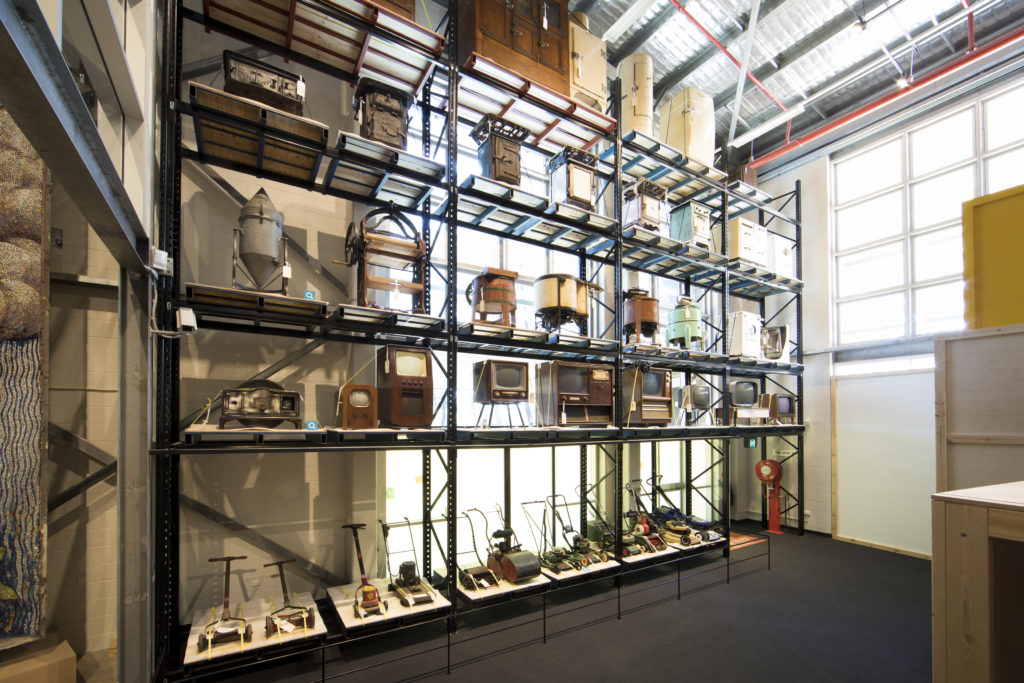
Think about all the museums you have visited. Maybe you have marvelled at jewellery worn in Ancient Egypt, or a musical instrument from medieval times. We are so fascinated by these objects from the past, but just like the Eveready Dolphin torch and Braun calculator, they were also once part of someone’s ‘everyday’.
In my heart, the Powerhouse Museum will always be the museum where I spent my pocket money on a Harry Potter wand and mistakenly ate a grass-flavoured jellybean, but now I have a much greater appreciation of all the objects it holds and the reasons behind hosting such a broad and diverse collection.
Written by Kimberley Bezuidenhout
Digital and Curatorial Intern, 2018
Under the supervision of Sarah Reeves and Eleanor James